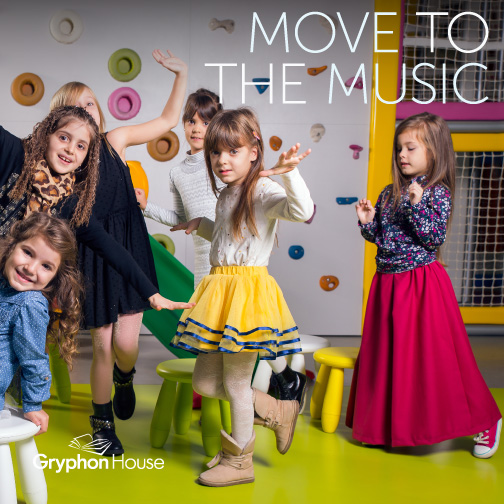
Music and movement activities for preschoolers are a creative and exciting way to promote the development of language and math skills and encourage exploration in little learners. Since movement is an essential part of life, movement activities play a crucial role in the growth of your preschooler. Move to Learn, by Joye Newman, MA, and Miriam P. Feinberg, PhD, is full of movement activities for preschool, allowing children to move, experience, and explore all areas of learning!
In their book, Newman and Feinberg cite movement as our most natural function as humans. Literally born moving, children are heavily impacted by the focus placed on developing their motor skills and other capabilities, as “scientists now recognize that stimulation through movement and sensory experiences during the early childhood years is necessary for the development of the mature brain.”
Movement activities exercise and develop the basic gross-motor skills of young children, but within those activities new concepts are being introduced, kick-starting the development of social-emotional skills, as well as those in math and language. Creating an environment that is rich in “sensory, perceptual and visual-motor experiences,” is key when introducing music and movement activities to your preschoolers. Music plays an important role in creating this environment as it provides numerous sensory-motor experiences and enriches activities in ways such as “enhancing the auditory system” of students and developing their sense of rhythm. These skills, while not obvious, can be applied to language and math development. For example, music may encourage the children to sing along, dance, and interact with their fellow classmates, allowing them to fine-tune their communication and language skills as well as explore their environment and how their body works. Rhythm also plays another role, as students can use rhythm and count beats and steps to learn their numbers.
“Moving children are developing children,” and while it may not always be apparent, they are constantly absorbing their environments and using their newly stimulated brains to make connections and apply skills gained in movement activities to other areas of life.
Learn more about the benefits of movement on young children and how to incorporate it into the curriculum, check out Move to Learn.
Author(s)Miriam P. Feinberg, PhD, Joye Newman
Anna Wilmoth
Marketer. Publisher. Reporter. Educator. Mother. Runner. Explorer. Anna served as director of marketing for Gryphon House from Oct 2014 - May 2017.